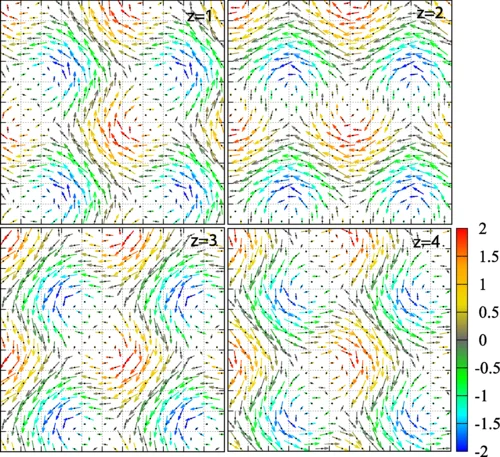From new neutron powder diffraction experiments on the chiral cubic (P213) magnet manganese germanide (MnGe), we analyze all of the possible crystal symmetry-allowed magnetic superstructures that are determined successfully from the data. The incommensurate propagation vectors k of the magnetic structure are found to be aligned with the [100] cubic axes, and correspond to a magnetic periodicity of about 30 Å at 1.8 K. Several maximal crystallographic symmetry magnetic structures are found to fit the data equally well and are presented. These include topologically nontrivial magnetic hedgehog and “skyrmion” structures in multi-k cubic or orthorhombic 3+3 and orthorhombic 3+2 dimensional magnetic superspace groups respectively, with either potentially responsible for topological Hall effect. The presence of orthorhombic distortions in the space group P212121 caused by the transition to the magnetically ordered state does not favor the cubic magnetic hedgehog structure, and leave both orthorhombic hedgehog and skyrmion models as equal candidates for the magnetic structures. We also report on a combined mechanochemical and solid-state chemical route to synthesize MnGe at ambient pressures and moderate temperatures, and compare with samples obtained by the traditional high pressure synthesis.
Facility: SINQ
Reference: von Pomjakushin et al, Phys. Rev. B 107, 024410 (2023)
Read full article: here

